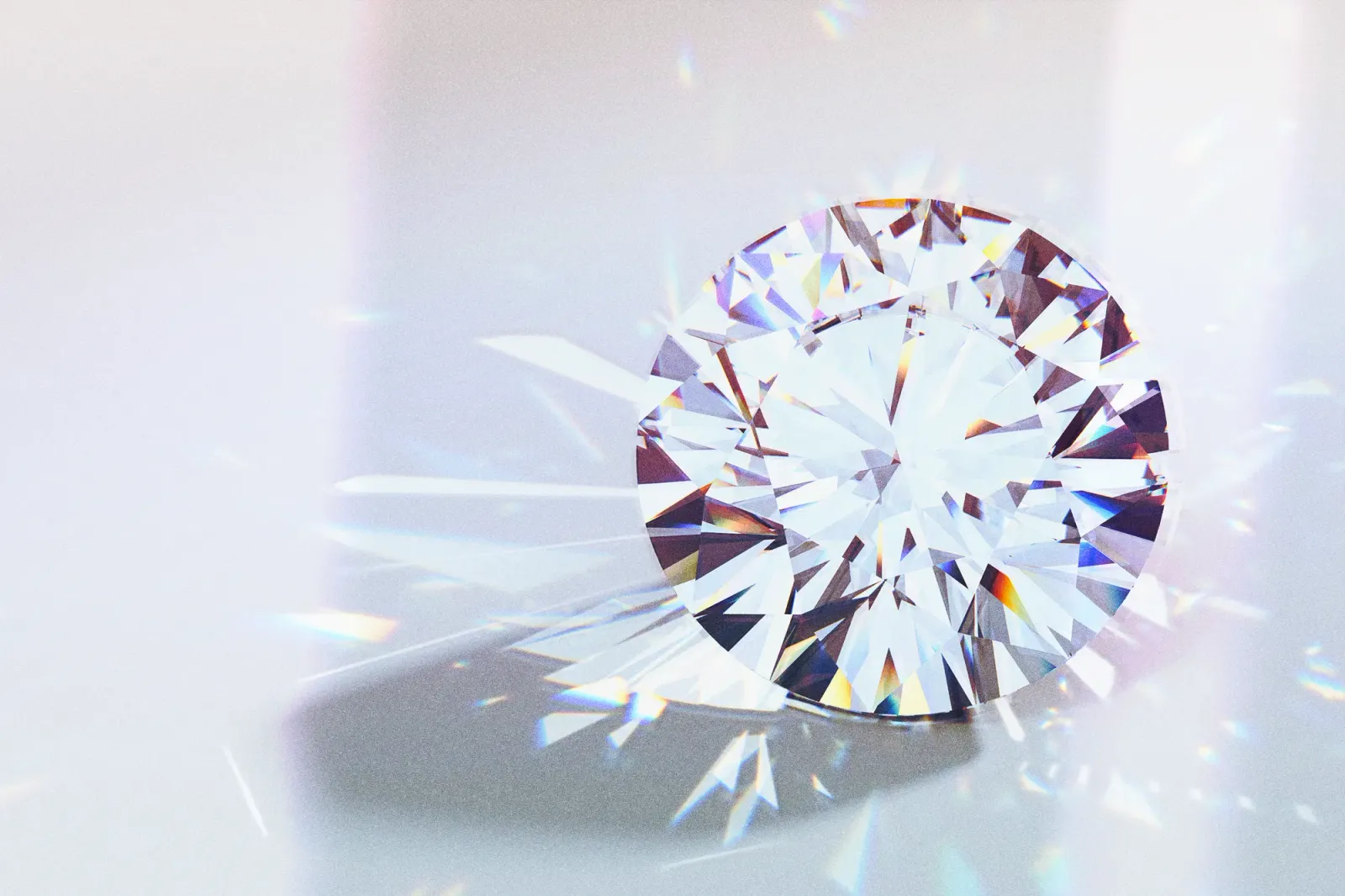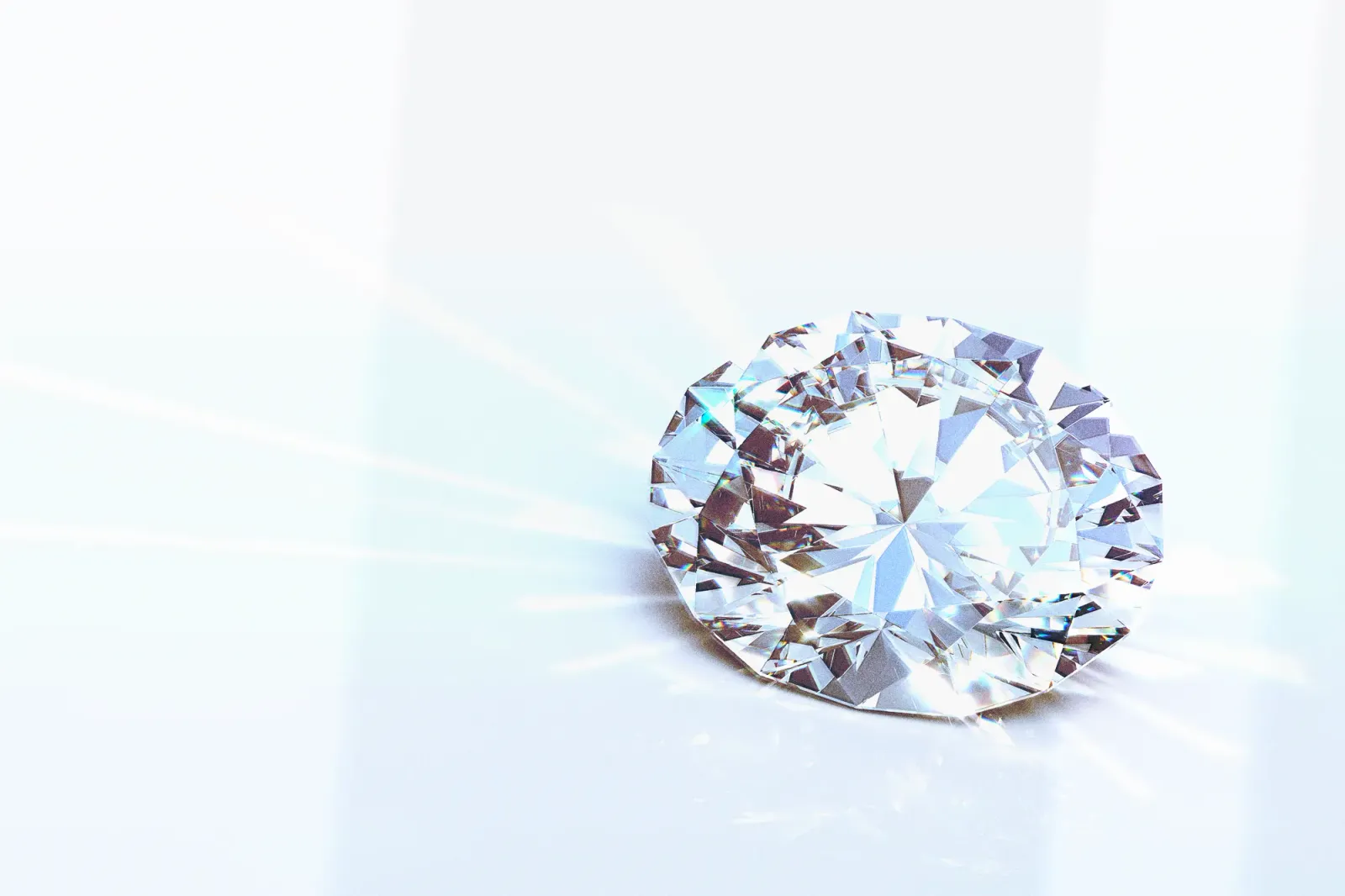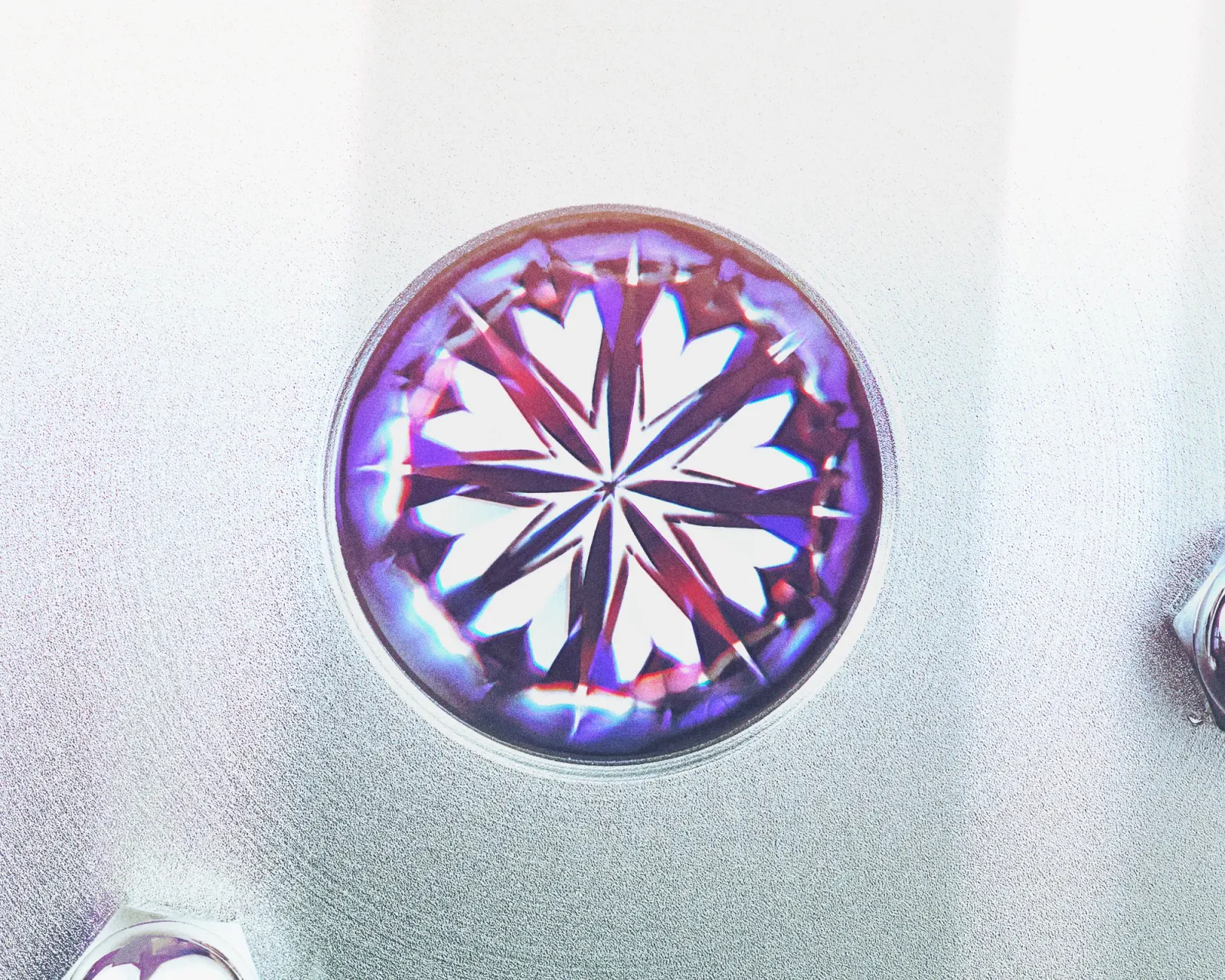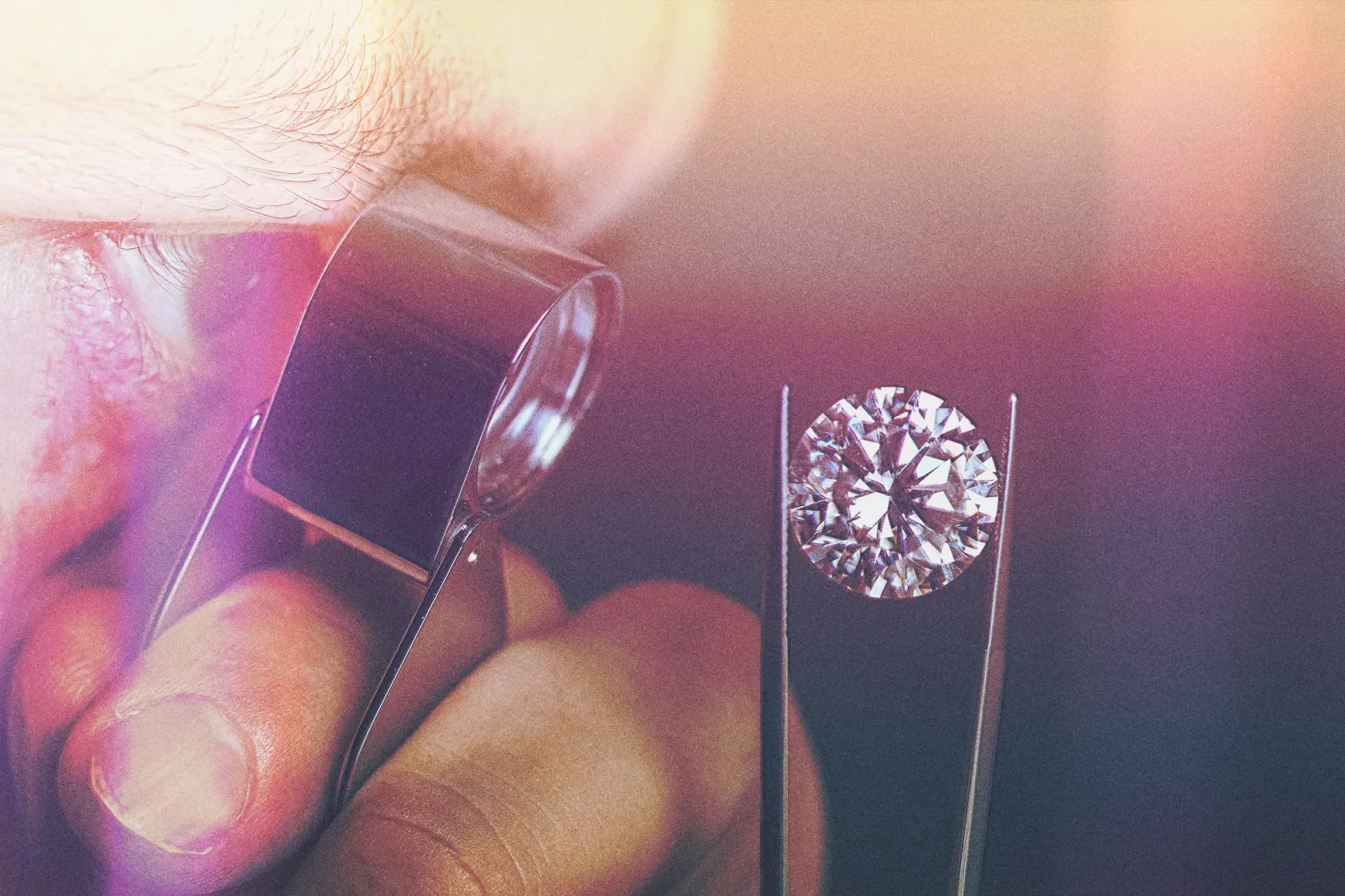Known for its sparkle and beloved for its timeless appeal, the round cut diamond is the world's most popular diamond shape. In fact, a whopping 3/4 of all the diamonds sold are round. And there is good reason for their popularity. The round brilliant cut is designed for sparkle. The symmetrical shape suits every finger and countless ring styles. Here's what you need to know to buy with confidence.
The cut that sparkles most
Almost all round diamonds today are what's called the 'round brilliant cut'. It is a shape developed to deliver breathtaking sparkle. Featuring 58 facets carefully aligned to reflect light, the round brilliant cut delivers more light return (brilliance) and therefore more sparkle (scintillation) than any other diamond shape. But it can only do that if it is cut correctly to prevent light leaking through.

A well cut round brilliant diamond will also flash with fire as the diamond disperses light into its spectrum of colors. This fabulous colored light show, alongside the white light sparkle, means the enduring popularity of the round cut is well earned.
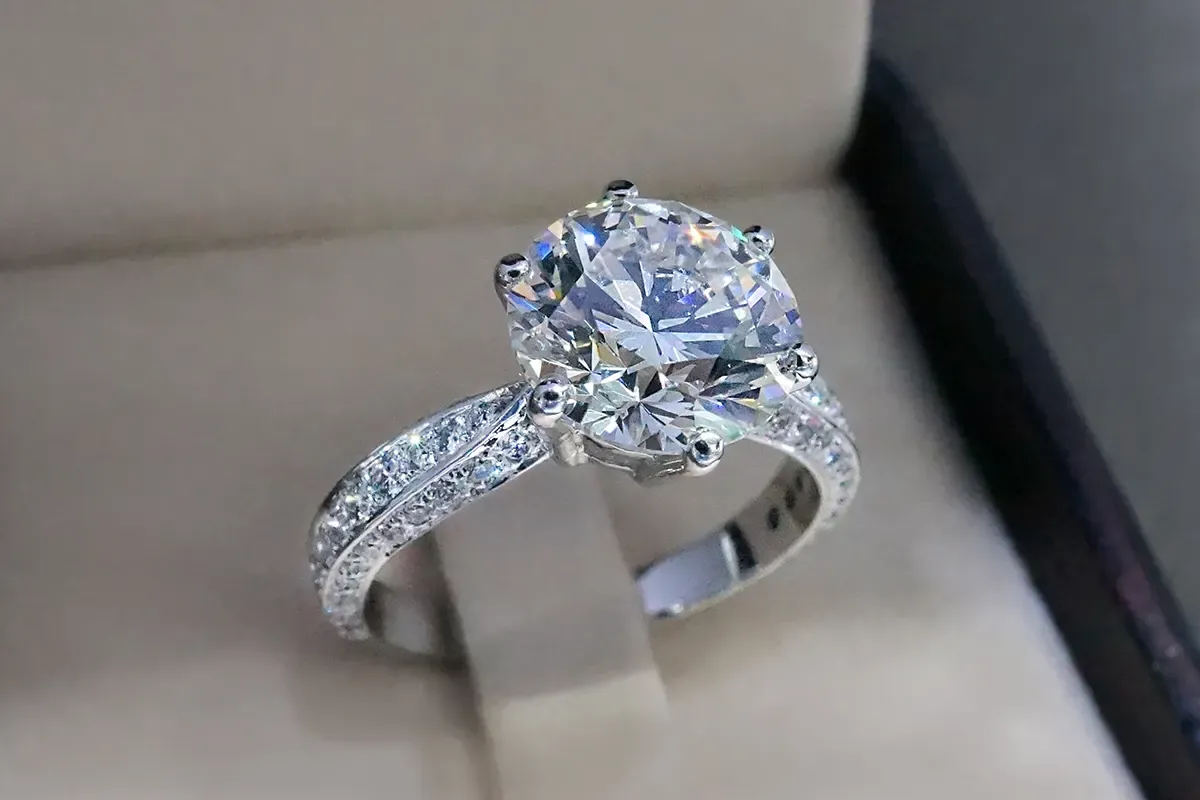
Round diamonds: vital statistics
If you've been reading up on the 4Cs of diamond quality you'll know that cut is the most important quality to pay attention to. That's because cut has the greatest affect on sparkle and overall light performance. So how do you know a round diamond is well cut? First up, we can look at its various parts to see how they measure up. Looking at a diamond online, you'll see a table of information from the diamond's certificate. If you're in-store, just ask to see it.
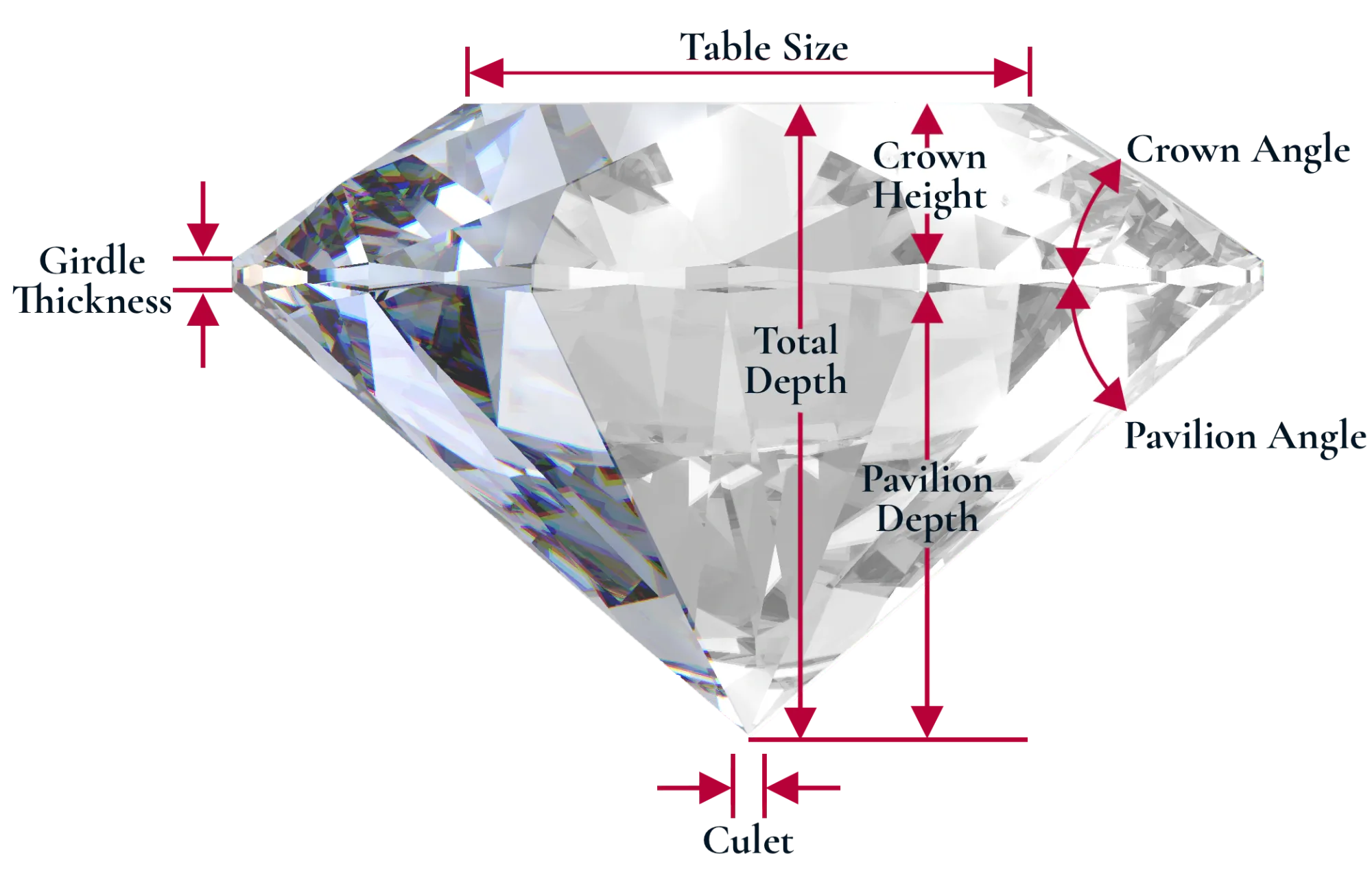
The GIA is the certification body that initially set the industry standard for cut, introducing five grades: Excellent, Very Good, Good, Fair and Poor. However, there are multiple factors that determine those grades (more on that here), so we still need to look beyond them. The table below gives a broad guide for the proportions to look for in a round diamond to deliver real sparkle.
| Excellent | Very Good | Good | |
|---|---|---|---|
| Table % | 55 - 58 | 53 - 60 | 52 - 62 |
| Depth % | 59 - 62 | 58 - 63 | 57 - 64 |
| Crown Angle | 34 - 35 | 32 - 36 | 31 - 37 |
| Pavilion Angle | 40.6 - 41.1 | 40.4 - 41.6 | 40.1 - 41.8 |
| Girdle | Thin to Slightly Thick | Thin to Slightly Thick | Thin to Slightly Thick |
| Culet | None | Very Small | Small |
| Length to Width Ratio | 1 - 1.01 | 1.01 - 1.02 | 1.02 - 1.03 |
Following these proportions will help filter out diamonds that don't perform as they should. A diamond's liveliness comes from the precision of the geometry of its cut, so you want to avoid those that lose sparkle by being cut too deep or too shallow, or that are hiding unnecessary (and expensive!) carat weight in an overly thick girdle. Look at the 360° video for this 1ct G VS1 diamond at $6,930 from Blue Nile and you'll see the problems caused by a very thick girdle and deep cut. It's carrying weight in the girdle that you're paying for but getting nothing from, and the depth means light will disappear straight through, hence areas of lifeless light in the center. Its face up measurements are 5.94 x 6.10mm. Compare it to this far more beautiful 1ct H VVS2 diamond at $6,495 also from Blue Nile. It may have a lower color, but the quality of cut means it will be far more brilliant. Sparkle is evenly distributed, and face up it's a larger 6.39 x 6.41mm (because it's not too deep, nor carrying dead carat weight in the girdle). Plus it's over $400 cheaper. Just shows that a little research can buy you a whole lot more sparkle for your dollar.
Round diamonds: which color grade?
Because round brilliant diamonds reflect light more effectively than any other shape, the brightness of an excellently cut stone will be able to conceal some color tint. Broadly speaking, the more color present in a diamond, the more it interferes with light play, but the facet design of the round brilliant returns so much light that you can still achieve the icy white look and superb sparkle with a slightly lower color grade. The D-F colorless grades guarantee an icy appearance as you can see from the selection here, and being sought after, come with a higher price tag. For the round brilliant diamond, moving into the G-J 'near colorless' category you can save some money whilst still getting a stunningly beautiful diamond like this 1.53ct G color round brilliant from James Allen.
It is important to note that the higher the carat weight of the diamond, the more it will show its color. For the cool white look, in diamonds over 1.5ct we wouldn't recommend going lower than a G, for stones 1-1.5ct stick to D-H. For diamonds between 0.5 and 1ct H and I can be a savvy choice, whilst at under 0.5ct you could go as low as J.
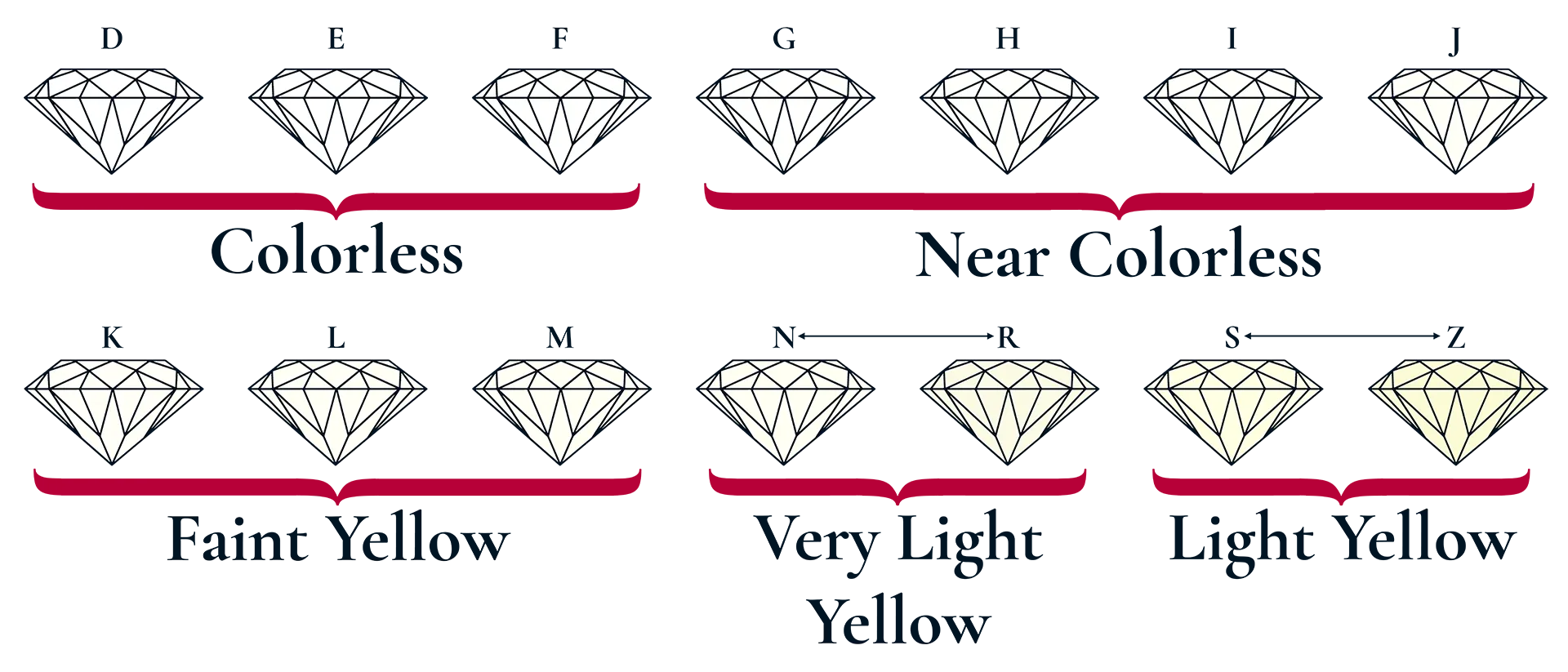
The ring setting you're choosing also has an impact - if yellow or rose gold are your metal of choice, a warmer color will be set off by the warm tones of the metal and an I or J color diamond will look whiter. Similarly if you are choosing a colorless diamond, be sure to go for a platinum or white gold setting so the light reflected from the metal is white too, rather than reflecting yellow gold tones into an otherwise colorless gem.
Round diamonds: which clarity grade is best?
Diamond clarity is a measure of how clear the stone is, and how many internal inclusions/flaws or external blemishes it has. A common misconception is that you need a near flawless diamond for spectacular sparkle, but in fact there are so many different types of inclusion that the most important thing is that your diamond is eye-clean, i.e. there are no visible flaws.
When deciding which clarity grade to go for, buying an eye-clean diamond presents the best value. The GIA clarity grades are assigned when a diamond is under 10x magnification - the magnification of a standard jewelers loupe. Therefore even if a diamond has flaws noted on the certificate, those flaws may be invisible to the naked eye. A diamond in the VS or SI1 categories may well be eye clean and can be a great purchase. Not all flaws are created equal, so make the most of the high res videos and photos on sites like James Allen. Compare these two diamonds, both graded VS2. This is a purchase worthy 2.02ct G VS2 diamond whereas this 2.03ct F VS2 diamond is one I'd avoid. A crystal near the center may be readily visible, and may even be reflected multiple times around the stone, but a crystal near the edge may never be noticed, and could even be hidden by the prongs of the ring setting.

Just as with color grades, the larger the diamond the more visible the flaws. Stick to VS or higher for diamonds of 1.5 carats or above.
The clarity grade you choose (as with any purchase!) also depends upon what you are looking for. To a greater or lesser degree inclusions affect light passing through the diamond, and the higher clarity grades are sought after by those looking for a more inherently pure diamond.
Round diamonds: pricing
The price you pay per carat is higher for round brilliant diamonds than for other shapes. To put it bluntly, it's the most expensive diamond cut. The main reason for this is the amount of rough diamond used to produce a round brilliant - whilst cutting a round diamond well over half of the rough diamond is discarded. Other fancy diamond shapes produce far lass wastage; a larger rough diamond is required per round brilliant than for any other shape.
Another reason for the higher price tag is popularity. Higher demand drives higher prices. But that demand is there for good reason - the cut of the round brilliant offers unparalleled sparkle, and marvelous fire. The round shape is also perfectly timeless.
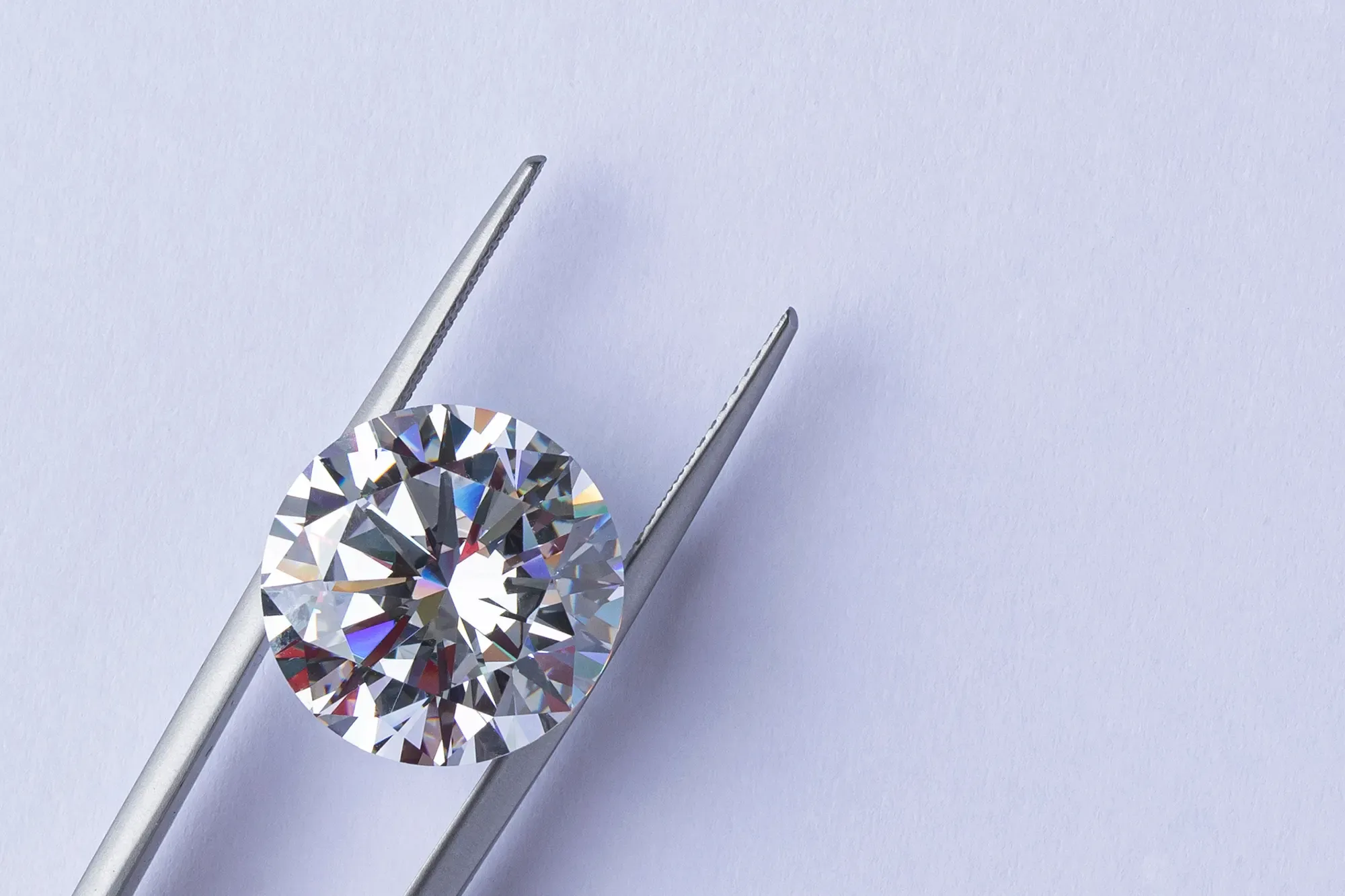
So, happy shopping! Armed with the above you'll find a diamond that's sure to dazzle. But if you want to find out more, check out our in-depth articles on the 4Cs, Hearts and Arrows round diamonds, or diamond fluorescence.

